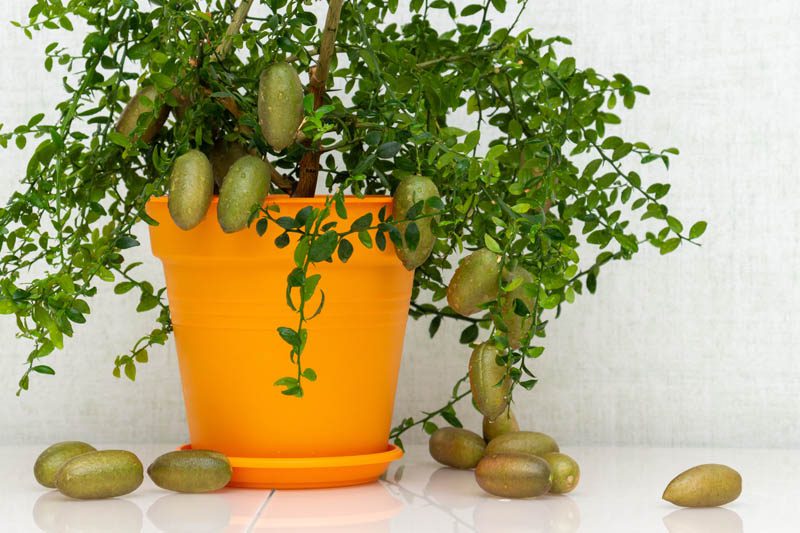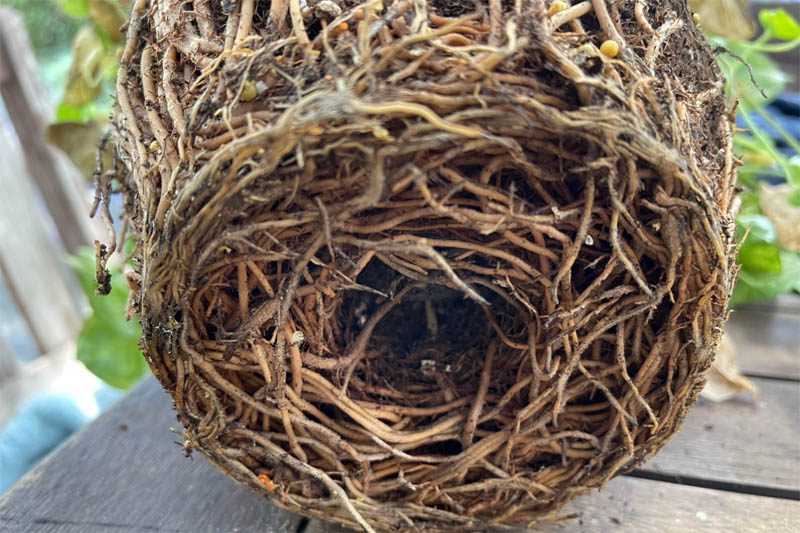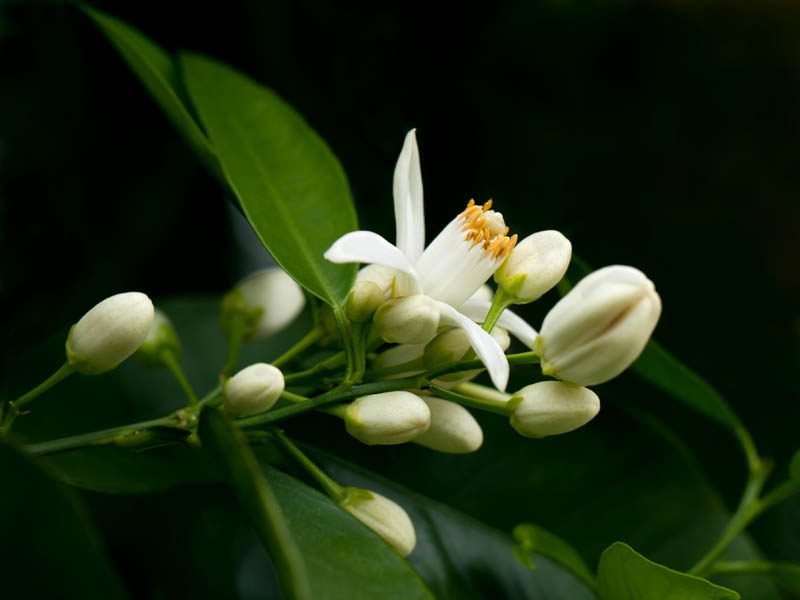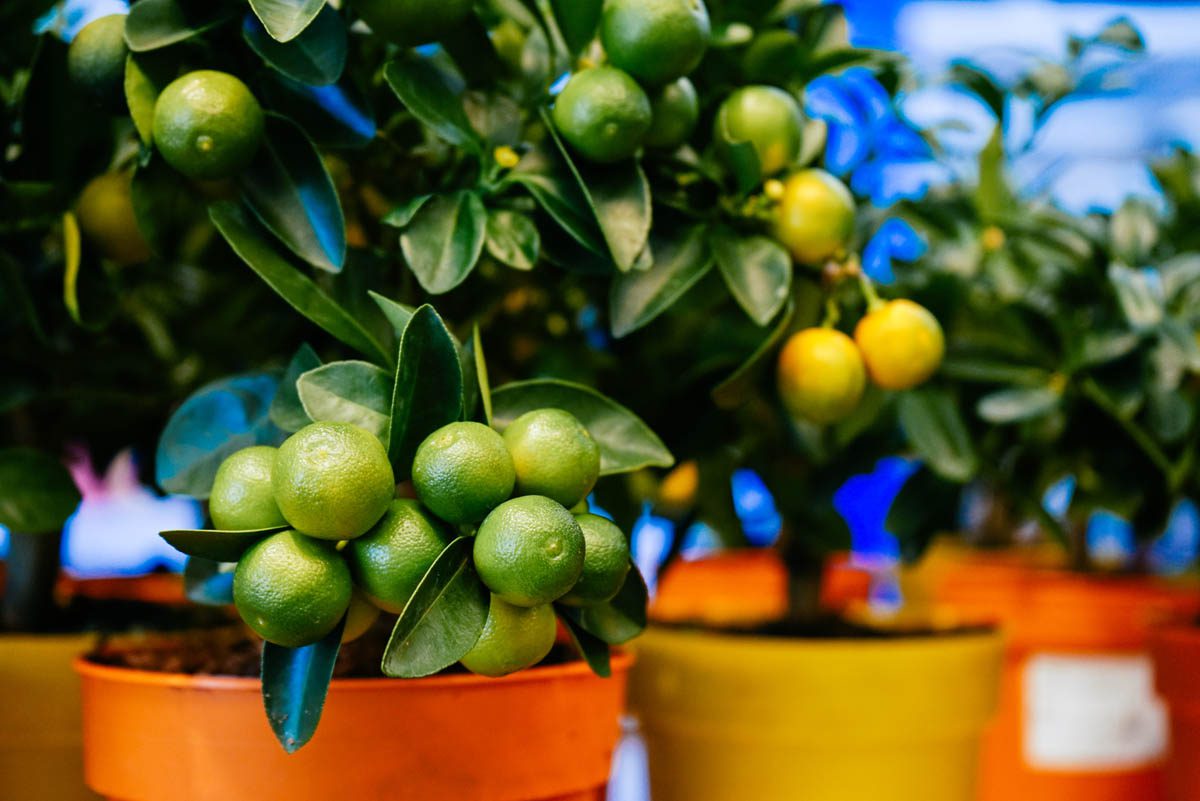What varieties of citrus can be grown in pots? Ι Benefits of growing citrus in pots Ι How to grow citrus in pots Ι When do citrus trees flower and fruit? Ι Pests and diseases Ι How cold is too cold for citrus? Ι Fruit care Ι Multi-grafted citrus trees
Citrus trees add an attractive feature to decks and gardens. Their shiny evergreen leaves, scented flowers and fruit make an appealing feature to any patio, deck or balcony. A number of dwarf and semi-dwarf varieties are available, that are suitable for pots and small spaces. It is important to note that growing citrus in a pot will reduce the yield compared to growing it in the ground.
What varieties of citrus can be grown in pots?
All varieties of citrus are suitable for pots, however, dwarf citrus trees are more suitable than their full-sized counterparts. Popular potted citrus varieties include lemon, lime, grapefruit, cumquat, mandarin, calamondin, sudachi, makrut lime, yuzu, Buddha’s hand, and Australian finger lime.
Benefits of growing citrus in pots
- Potted citrus trees are ideal for small areas such as balconies, small courtyards or decks.
- In cold climates, potted citrus can be moved into a greenhouse, house or orangery during the cooler months.
- Renters don’t need permission to grow citrus in pots.
- Potted citrus can easily be relocated if you move house.
- Trees will not reach their full size when grown in pots which is good for smaller gardens.
- Due to their smaller height, citrus tree fruit is easier to pick.
How to grow citrus in pots

Citrus trees need to grow in full sun, with a minimum of six hours of sunlight a day and should be placed in the sunniest part of the garden.
Before planting, remove the tree label from the tree as even a thin tie can ringbark and potentially kill a tree. Tree labels can either be tied to a supporting stake, placed in the pot or stored in the home.
Pot size
Select a pot that is a minimum of 50 cm (20 inches) in diameter, with drainage holes in the bottom to allow water to freely run from the pot. Terracotta is one of the best options for citrus due to its porous nature which absorbs excess moisture. Elevate the pot off the ground, increases drainage, and protect the surface underneath from rotting.
Soil
If possible, select a potting mix formulated for citrus or roses. Citrus trees like to grow in well-draining loamy or sandy soil. Inorganic ingredients such as perlite and vermiculite can be added to the potting medium to increase drainage.
Staking
Most immature fruit trees will have some kind of support attached which should remain in place until the plant is established and there is no more movement at the base of the tree. Ties should be replaced with soft plastic-covered wire or cut-up pantyhose, which are kinder on the trunk than ties.
Repotting
Eventually, potted citrus will outgrow their pot and will need to be moved into a larger pot. Citrus should be repotted every 2 – 3 years. As more and more roots develop, there is less room for the potting medium, and nutrient levels decline. The roots of a severely potbound plant will eventually take up all the space in the pot.

Signs the citrus has become potbound include roots growing out through the drainage hole, a slow down in growth and increased frequency in watering. The best time to repot citrus is in spring before the active growth phase commences.
Nutrients
Citrus trees have a high demand for nutrients from the time they flower until their fruit has set. Feed citrus once a month with a small amount of liquid fertiliser during the active growing season and reduce it to every three months during the dormant period. Yellow leaves are a common sign of a lack of nutrients.
Water
Despite their drought-tolerant reputation, citrus trees need adequate water, especially during fruit development, or they will drop their fruit. Citrus in pots should receive a deep water at least once a week, and more during high temperatures, but do not allow water to pool in the root zone. Citrus trees will lose their leaves (defoliate) if they are under or over-watered. The leaves of an underwatered citrus will turn yellow before defoliating, while overwatered citrus defoliates without any leaf colour changes. Flowers and fruit will also be lost if the tree is underwatered.
Ideally, tap water should be allowed to sit for 2-3 days for chlorine to dissipate, although this may not always be practical, especially if you have a number of citrus in pots.
Avoid watering the trunk to reduce the risk of collar rot. Instead, focus the water around the root ball, and within 10 cm (4 inches) of the trunk.
Rootstock suckers
As a rule, citrus trees don’t need to be pruned, unless there is dead growth on the tree. As most citrus trees are grafted onto the rootstock, rootstock suckers may develop under the graft (the site where the citrus cutting was attached to the rootstock). Rootstock suckers should be pruned back, or they can take over the entire tree and compete with the tree for nutrients.
Mulching
Citrus trees have shallow feeder roots, which should be protected by mulching. Mulching also holds in moisture, which can decrease the frequency of watering. As tempting as it may be to plant low-growing plants around the citrus, due to their shallow root system, they not like plants near the root zone and should be the only plant in the pot.
Mulch depth should be between 5 – 10 cm (2 – 4 inches). Do not allow mulch to touch the base of the tree, which can cause collar rot.
When do citrus trees flower and fruit?

The length of time it will take for a citrus tree to bear fruit depends on the size of the tree. Most grafted citrus for sale in nurseries are approximately 90 cm (3 feet), and may already have flowers or fruit on them. It is good practice to remove immature fruit from young citrus trees for the first 2-3 years to allow the plant to put its energy into growth.
Citrus trees flower in late spring, followed by the appearance of immature fruit. Most trees produce a prolific number of flowers and immature fruit, in numbers far greater than the plant can maintain. It is normal for excess flowers and the weakest immature fruit to be dropped from the tree due to competition among fruit for nutrients and water. This is known as post-bloom drop, or June drop in the Northern Hemisphere as it typically occurs in the month of June.
In warmer climates, many citrus trees will produce a second flush in mid to late summer. All of my finger lime, makrut and calamondin citrus flowered in early spring, however, none of the fruit set. They are currently having a second flush in mid-summer, with more flowers than with the spring flush. The calamondin in particular is popular as an ornamental plant due to its year-round production of flowers and fruit in temperate climates.
It is important to ensure citrus trees receive adequate water once flowering and fruit production commences. Underwatering can also cause fruit to drop, beyond the natural shedding of excess immature fruit.
Pests and diseases
Anthracnose: A common infection caused by the fungus Colletotrichum spp. Symptoms of anthracnose include yellowing of the leaves, premature leaf drop, dieback of shoots and branches, crown thinning, reduced fruit yield, dark staining on fruit.
Citrus black spot: A fungal infection caused by Phyllosticta citricarpa which affects the fruit and leaves of infected plants grown in subtropical climates. Symptoms include a hard or sunken black spot with a yellow halo on the leaves and sunken circular lesions on the rind of mature fruit.
Collar rot: Another fungal infection caused by Phytophthora citrophthora which thrives in moist conditions where organic matter makes contact with the trunk. Signs of collar rot initially start with the appearance of sunken water-soaked spots. Eventually, the bark dies and falls away to reveal a gummy discharge. Infection spreads to the inner part of the trunk, ringbarking the tree.
Stink bugs: Also known as ‘citrus bugs’, stink bugs are six-legged, flat-bodied insects with a shield-like shape that are known to secrete a highly odorous chemical when disturbed. Stink bugs feed on the sap of young shoots and flower stems causing them to wither and die.
How cold is too cold for citrus?
In cooler temperatures, citrus trees should be brought indoors or moved into an orangery or greenhouse. Some citrus varieties such as satsuma and yuzu are more cold-tolerant than others. Ideally, citrus trees should be moved indoors when temperatures dip below 7ºC (44.6ºF).
Fruit care
Cover the tree with wildlife-safe netting with an aperture of 5 mm or less, before the fruit reaches maturity to protect it from wildlife. Smaller fruits such as kumquats can be protected by placing an organza gift bag over the entire fruit.
Remove any uneaten ripe fruit from the tree and ground as it can harbour disease and attract rodents and can result in a smaller crop the following year.
Do citrus need cross-pollination?
Most citrus trees do not require cross-pollination, as they are self-fertile. This means that the tree can fertilise its own flowers without needing pollen from another tree. Some types of mandarins may benefit from cross-pollination to increase fruit set and yield.
Multi-grafted citrus trees
A multi-grafted citrus tree contains more than one variety of citrus. For example, lemon and lime, orange and grapefruit. While these trees can save on space, often one of the citrus varieties will become dominant. We planted a lemon and lime tree 12 years ago, which has almost entirely reverted to lime. Just one small branch remaining of lemon.
Julia is a writer and landscape consultant from Wollongong with a love of horticulture. She had been an avid gardener for over 30 years, collects rare variegated plants and is a home orchardist. Julia is passionate about learning and sharing her knowledge of plant propagation and plant toxicology. Whether it’s giving advice on landscape projects or sharing tips on growing, Julia enjoys helping people make their gardens flourish.




